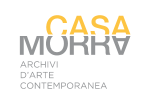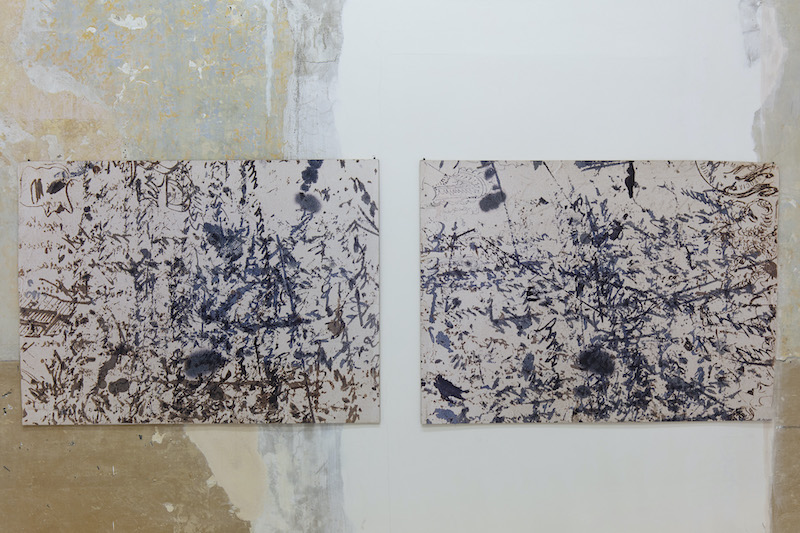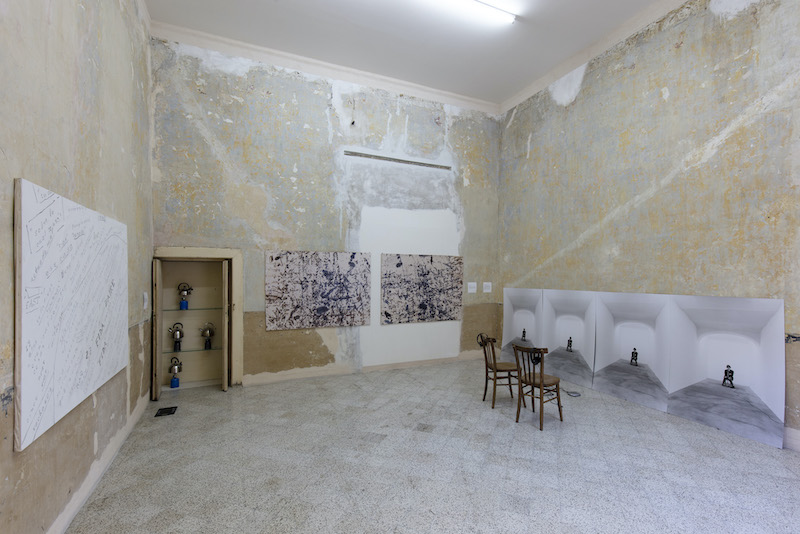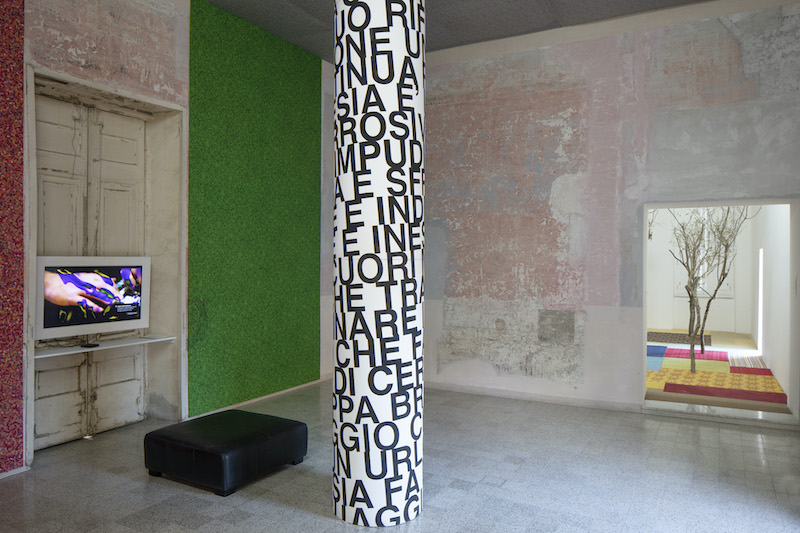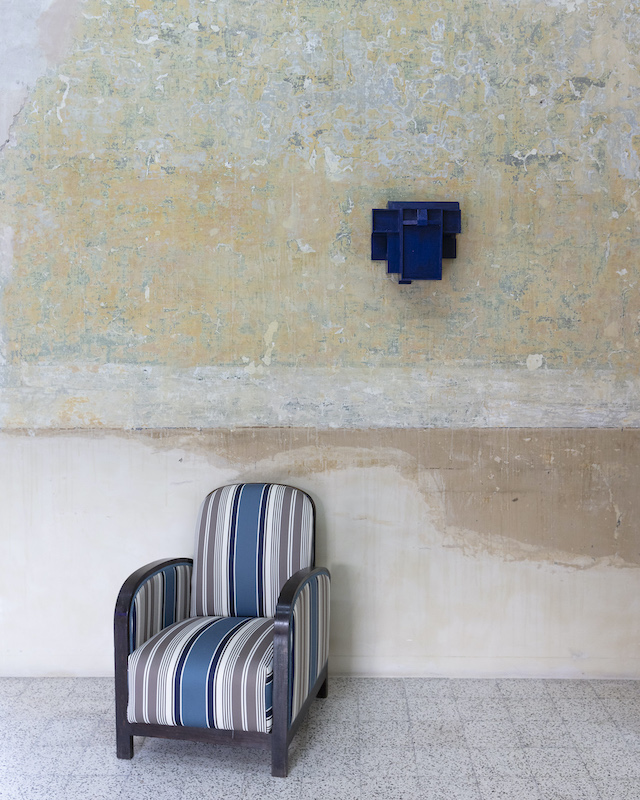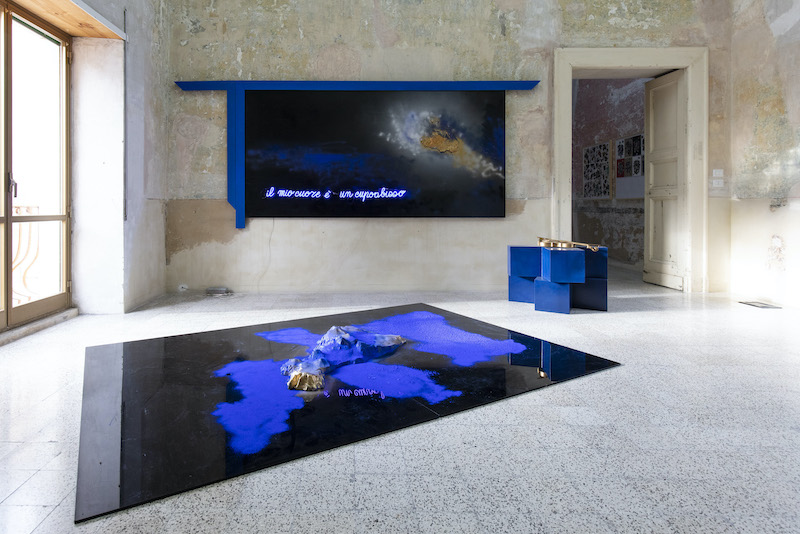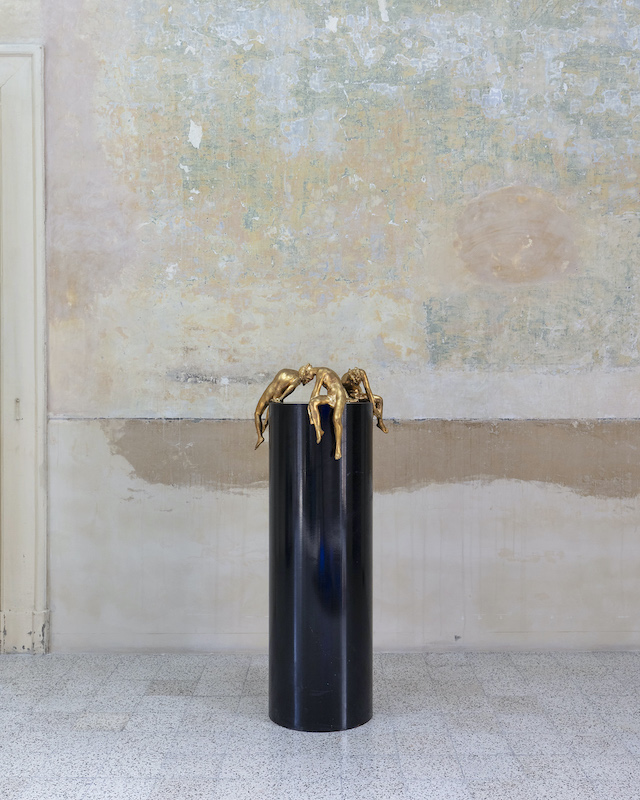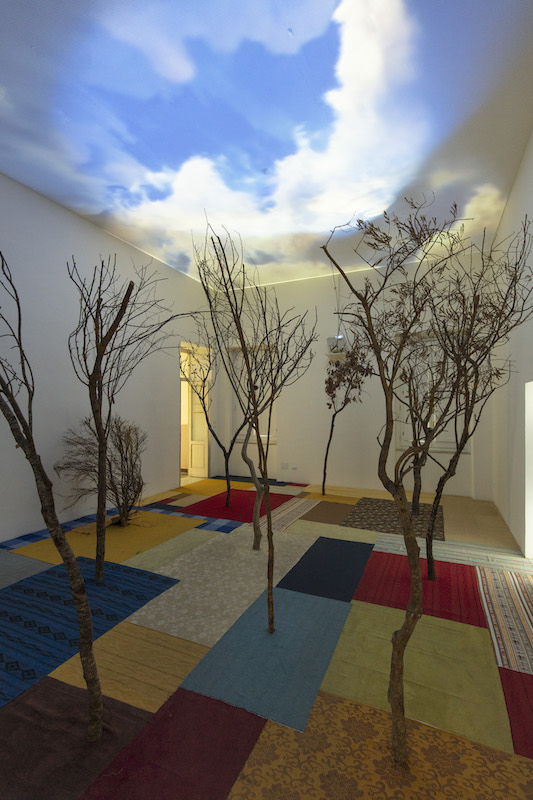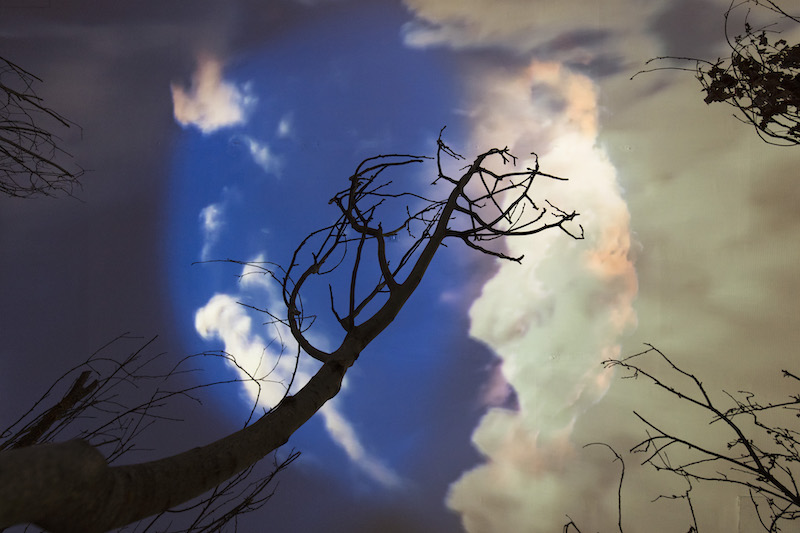Casa Morra
3P+B
Archivi d’Arte Contemporanea – Il Gioco dell’Oca – 100 anni di mostre
OPENING
FRIDAY 26th OCTOBER 2018 at 5pm
3rd EVENT – 3rd YEAR
Luca Maria Patella, Cesare Pietroiusti, Vettor Pisani + Nanni Balestrini
&
Luca Maria Patella and Rosa Foschi Patella. The films.
Screening of artist’s films.
&
Girolamo De Simone concert
“Prayer for Aldo Braibanti” – A homage to Giuseppe Chiari
Casa Morra continues the Gioco dell’Oca (“Snakes and Ladders”) idea, opening its third year of activity around the artists featured in the collection and the theme of inversions and confluences, all the while bearing in mind the 100 years of planned exhibitions. Once again, the number 3 – symbol of the triune – dominates, marking the time gone by since Casa Morra opened, as well as the presence of the artists in the exhibition. A sign of the power of energy and a unifier, the number 3 mirrors the multifaceted and dynamic identity of Casa Morra, which welds together the arts, education, research, experimentation, and the local territory. The personality of Casa Morra, able to express a plurality of languages and trends, uniting them in one place, is reflected in the number 3 and its geometric expression, the triangle, image of the return of the multiple into one.
The singular/plural dichotomy is implemented in the 3P+B exhibition, with works by Luca Maria Patella, Vettor Pisani and Cesare Pietroiusti, and with Nanni Balestrini.
Luca Maria Patella is the personification of versatility, an omnivorous precursor who cannot be boiled down to any narrow definition. With a penetrating gaze upon science and philosophy, he is a poet and photographer, a sculptor, a performer, and video artist. On display here are the Alberi parlanti (Talking Trees, tr.) presented in 1971 at the Apollinaire Gallery in Milan, in Gianni Carandente’s New Italian Art exhibition at the Walker Art Gallery in Liverpool, and at the MACRO – Museum of Contemporary Art in Rome. The Trees, under a Heaven of moving clouds, take the viewer on a sensory, dreamlike and poetic, fairy-tale journey. By placing the ear near the trunk and branches, we can listen to the trees murmuring, coming alive, and whispering ironic-creative or scientific speeches. In this interactive sound path Patella creates a multimedia space in which the word becomes the lifeblood of a synaesthetic game.
Cesare Pietroiusti is present in the encounter between different times and meanings that takes place at Casa Morra in the context of the Gioco dell’Oca (Snakes and Ladders). In this exhibition he presents Lavori da vergognarsi ovvero Il riscatto delle opere neglette (Works to be ashamed of or The Redemption of Neglected Works, tr.), a retrospective of pieces that have never been exhibited before, “of works that, having been made in the past for a certain exhibition, I have never used because”, as Pietroiusti says, “once I had made them, I thought they seemed inadequate, out of context, or too similar to works by other artists. In so doing, the artist reflects on the relationship between the wish to present a work and the possibility of fulfilling this desire by tricking it, i.e., by exhibiting the “wrong works”.
This nomadism between different languages recalls the work of Vettor Pisani, in which “it is difficult to establish linguistic supremacy, if not perhaps under the general term of ‘behaviour’, meaning a total immersion of life in art” (I. Tomassoni in Vettor Pisani. Apocalypse Now. Carpe Diem, 2012) In Il mio cuore è un cupo abisso (My heart is a dark abyss, tr.) (2004) Pisani stages “obsessive metaphors” through the value of the symbol, the sacred and the profane, the spiritual and the material and he focuses on themes of Symbolist art in a dialogue between painting and text.
The oeuvre of Nanni Balestrini focuses on the idea of different repetition. A tireless experimenter with language, he creates connections between words, texts and images in both visual and theatrical works. An active member of the Avantgarde of Italian poetry in the 1960s, Balestrini has reconfigured the language of everyday life. His Colonna Verbale (Verbal Column, tr.), which rises in the centre of one of the rooms in Casa Morra, crowns the word as the key element of grammar and verbal and visual communication, just as the column is the supporting structure in architecture. Like the sheets with words on them that cover the ceiling of the room, the column erases the meaning of the words printed on it and magnifies the enigma. Also on show is the world’s longest film, Tristanoil (2,400 hours of screen time) in which Balestrini combines the title of the 1966 novel Tristano with the word oil, as a denunciation of the destruction of the planet through the exploitation of its resources.
